Retirement controversy, captaincy debacle, and that audacious innings against India: Tamim Iqbal opens up in a Pakistani sports show
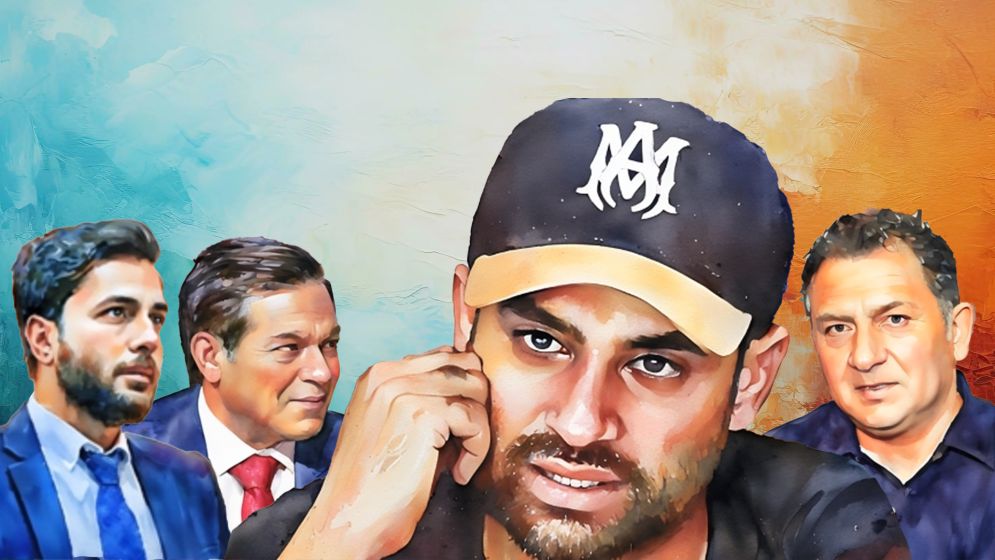
Tamim Iqbal, the decorated Bangladeshi cricketer with over 15,000 international runs, may have retired from the game, but he continues to share his insights on various platforms.
Recently, he appeared on the “Caught Behind” cricket show hosted by Dr. Nauman Riaz, alongside former Pakistan captain Rashid Latif and data analyst Kamran Muzaffer.
Tamim discussed the growth of Bangladesh cricket, the emergence of talented fast bowlers, the significance of school cricket, the leadership of Mashrafe Mortaza, and facing challenges like Saeed Ajmal's bowling.
Here's a glimpse into the engaging conversation:
Dr. Nauman: Tamim, welcome to Caught Behind! Before I bring in our guest expert, Rashid Latif, I have to ask: what led to your unexpected retirement? We're not looking for controversy, just your perspective.
Tamim Iqbal: I understand there's curiosity, but a lot happened leading up to and during the 2023 World Cup. While some details may have surfaced in the media, the reasons behind my initial retirement are deeply personal and I haven't felt comfortable sharing them publicly. However, there were definite events that led to my decision.
Although I returned to the team shortly after, ultimately I didn't participate in the World Cup. It was a complex situation with many factors at play, and I believe the full story will eventually come to light.

Dr.
Nauman: We respect your decision not to
discuss those details. However, you retired from T20 cricket a year before your
overall retirement. Was that a personal choice, free from any controversy?
Tamim: Nothing, no controversy. I just decided I had enough.
Dr. Nauman: Tamim, you've been a cornerstone of Bangladesh cricket since its early days, witnessing its journey from associate to full member status. Considering this unique perspective, do you believe Bangladesh has fully realized its potential?
While there have been notable achievements like reaching the Champions Trophy 2017 semi-final and a few Asia Cup finals, do you think the overall progress has been satisfactory, especially given the historical context of gaining full membership after the famous victory against Pakistan in 1999?
Tamim: No, I believe we could have achieved more in ICC tournaments. While we've performed well in bilateral series, especially in white-ball cricket since 2015, our track record in ICC tournaments isn't as strong. There are a few bilateral achievements we can be proud of, but not many in major tournaments. This is an area where we need to improve, but I'm optimistic about the future.
Rashid Latif: Tamim welcome to Caught Behind. My first question is: from where did that aggression come into your batting? Did it come from Chittagong? When you started playing cricket, very few players batted aggressively in Bangladesh as far as I can remember. So this six-hitting prowess, taking on bowlers, can you tell us from where did this aggression come from, did it come from your uncle?
Tamim: My family played a big role in that journey. My uncle, who was a national team player, was a major influence on me. I used to follow and admire him a lot; he was known for his powerful batting style in Bangladesh.
The 1996 World Cup sparked my lifelong passion for cricket. My brother, always the mentor, introduced me to the legendary Sanath Jayasuriya. I was captivated by his explosive batting style, spending countless hours in our drawing room mimicking his every move. As a kid, those moments felt like pure magic. Looking back, I wonder if those early memories subconsciously shaped my own path as an aggressive opening batsman in international cricket.
Rashid Latif: Following Bangladesh cricket, we have seen some players emerge in the under-19s in 2020, especially pacers. Was it due to the impact of Allan Donald or did the Bangladesh Cricket Board want to focus on fast bowlers with pitches that suit them? How do you see this change coming into Bangladesh cricket?

Tamim:
A significant portion of the credit for Bangladesh's fast bowling improvement
should go to our former Test captain, Mominul Haque. Despite being a shorter
player, Mominul is one of our finest Test batsmen. However, it's his actions as
captain that truly deserve recognition.
Bangladesh cricket has historically relied heavily on spin bowling. Yet, Mominul, during his captaincy in first-class tournaments, made a conscious effort to change this. He ensured that fast bowlers bowled the majority of overs, even in domestic cricket where spinners traditionally dominated.
I witnessed this firsthand, as we played for the same division. Mominul insisted on fast bowlers bowling at least 20 overs a day, despite my occasional protests. His vision was clear: if fast bowlers didn't get the opportunity to bowl, they wouldn't learn and improve.
Of course, coaches like Otis Gibson, Courtney Walsh, and Allan Donald played crucial roles in developing our fast bowlers. However, if I had to single out one individual, it would undoubtedly be Mominul Haque. His foresight and commitment to nurturing fast-bowling talent laid the foundation for the progress we see today.
Dr. Nauman: Tamim, what are your thoughts on grassroots cricket development in Bangladesh? With the evolution of modern cricket and the emergence of new innovative shots, do you believe Bangladesh is also focusing on nurturing talent that aligns with the demands of contemporary cricket?
Tamim: In my view, grassroots cricket is fundamentally about school-level cricket, where children are first introduced to the game. Under-15s and under-19s have already progressed beyond this stage, having been exposed to structured systems set up by cricket boards.
Unfortunately, in our subcontinent, with the possible exception of India and Sri Lanka who excel in school cricket, we tend to overemphasize the national team. This focus often overshadows the crucial development happening at the school level.
In Bangladesh, I can confidently say that school cricket needs significant improvement. While there have been tournaments over the years, it requires a more concentrated effort. The Bangladesh Cricket Board (BCB) should prioritize school cricket, recognizing it as the breeding ground for future talent. Under-15s and under-19s have already developed foundational skills; school cricket is about introducing the ABCs of the game to a new generation.
I'm unsure about the specifics in Pakistan, but in Bangladesh, focusing on school cricket is essential for nurturing the next generation of players.
Kamran Muzaffar: Good to have you on this show. As you just said school cricket is not happening the way it should, but we are seeing the rise of fast bowlers: Tanzim is doing well in the T20 World Cup, Taskin is there, and Mustafizur is a different type of bowler. Where is this pack of fast bowlers coming from, at which level they are being produced or is there a nursery for them? Is there any special effort put into the process or they are just picked as pacers and doing well?
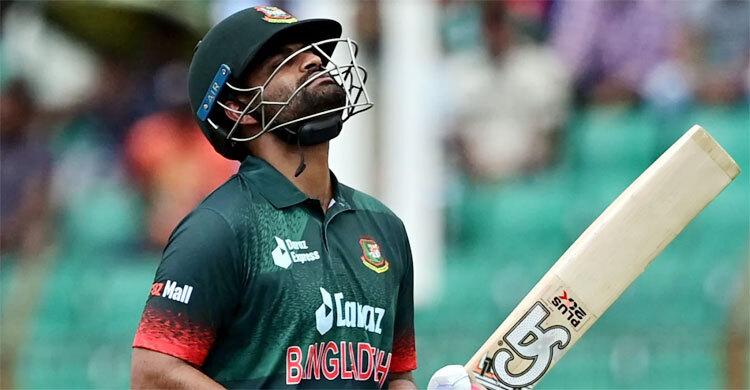
Tamim:
To clarify, school cricket does exist in Bangladesh, but it needs more
attention and focus. Regarding the development of fast bowlers, Bangladesh has
introduced a team called "Tigers," which serves as a platform for
players who have been dropped from the national team or are on a break. The
Tigers provide training and development opportunities to keep these players
sharp and ready for selection. This initiative, combined with other factors,
has contributed to the recent improvement in Bangladesh's fast bowling.
However, I believe the real transformation will come when young cricket enthusiasts have more fast-bowling heroes to idolize. While Mashrafe Mortaza has been a role model, Bangladesh hasn't had the same depth of fast-bowling legends as Pakistan. As current players like Mustafizur Rahman, Taskin Ahmed, Shoriful Islam, and Tanzid Hasan Sakib continue to succeed, they will inspire a new generation of fast bowlers, leading to a significant shift in the cricketing landscape in Bangladesh.
Dr. Nauman: Tamim you just mentioned Mashrafe Mortaza. If we get into Bangladesh’s captaincy from the very beginning, your uncle was the first captain if I am not mistaken, and then we had Habibul Bashar and others followed.
How would you evaluate the captaincy of Mashrafe Mortaza? Was he only a strategic, tactical captain or was he the one who left the team well-integrated and led from the front? How do you rate him?
Tamim: Mashrafe Mortaza was an exceptional leader, not only because of his on-field abilities but also his remarkable skills off the field. He prioritized building relationships and fostering a supportive team environment. His door was always open for players to discuss their concerns or struggles, and he treated each individual uniquely, tailoring his approach to their specific needs. His exceptional man-management skills, combined with his prowess as one of Bangladesh's best fast bowlers, made him an outstanding captain.
Playing under Mashrafe was a privilege. He demonstrated exceptional leadership qualities that fostered a positive and motivating team culture. While his statistics might not place him among the world's top bowlers, his impact on Bangladesh cricket is undeniable. He leaves behind a legacy of inspiring leadership and unwavering dedication to the sport.
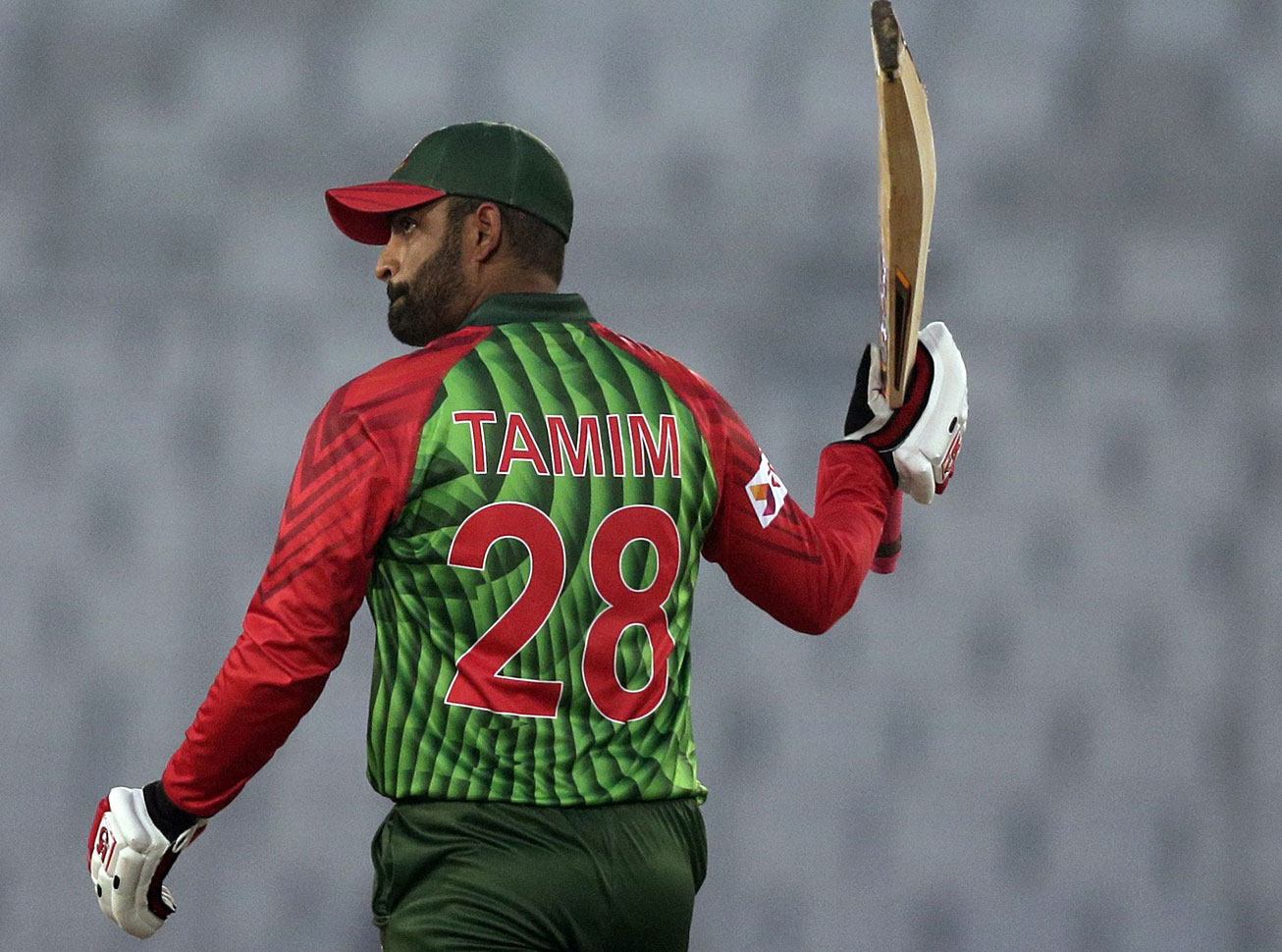
Rashid
Latif: He (Mashrafe) was a very good leader and
that difference must have been felt after he left. The 2015 season went really
well for Bangladesh where you defeated England in the world cup. There was a
Test series. New Zealand arrived, South Africa arrived, even Pakistan went on
tour and as well as India. All those teams lost. What made 2015 and 2016 the
two best seasons for Bangladesh cricket?
Tamim: Prior to India's tour in 2015, Bangladesh had a phenomenal year, winning consecutive series against India, South Africa, and Pakistan. Our qualification for the 2017 Champions Trophy hinged on these victories, a goal that initially seemed daunting.
I recall a team meeting where we discussed the necessity of beating these top teams to secure our spot in the tournament. It was hard to believe at first, but after defeating Pakistan, our confidence grew. Winning against India and South Africa further solidified our belief in ourselves.
This success marked a turning point in the team's mentality. We had struggled in 2013 and 2014, but we decided to prioritize winning at home before focusing on overseas matches. Our 2015 performance, culminating in a quarter-final appearance at the World Cup, demonstrated the effectiveness of this approach.
Since 2015, Bangladesh's ODI record has been impressive, a testament to the team's transformation during that crucial period.
Kamran: Tamim bhai, you talked about the 2015 series where Bangladesh won 3-0 against Pakistan. You played Saeed Ajmal quite effectively. Was there any specific approach or strategy that stood out during that series? If you'd like to share something about it...
Tamim: Let me tell you, if anyone asks about the toughest bowler I've faced, Saeed Ajmal is undoubtedly on that list. I was fortunate in one particular encounter where he was making a comeback with a modified action. Early in my innings, he bowled a delivery that was extremely close to getting me out. Thankfully, the umpire didn't raise the finger.
I went on to score a century in that match, taking the attack to Ajmal. It was pure luck on my part because if he had dismissed me early on, it could have been a different story. It was his first game back with a changed action, and a setback could have put him under immense pressure. Saeed Ajmal was, and still is, a champion bowler whom I respect immensely. However, that one instance turned out in my favor and went against him.
Rashid Latif: There are numerous spinners in Bangladesh, and my personal favorite is Taijul Islam. His bowling action is remarkably smooth and effective, particularly on turning pitches in T20 cricket. However, there has been a scarcity of leg-spinners emerging from Bangladesh. Recently, Rishad Hossain filled that gap by taking four wickets and securing a victory against the Netherlands in a crucial match. This begs the question: why aren't there more right-arm leg-spinners coming up in Bangladesh?
Tamim: Firstly, I believe Taijul Islam is an exceptional bowler who is highly underrated. He has also performed well in white-ball cricket, as I witnessed when he played for my BPL team. The reason for his lack of recognition is unclear, but it's unfortunate.
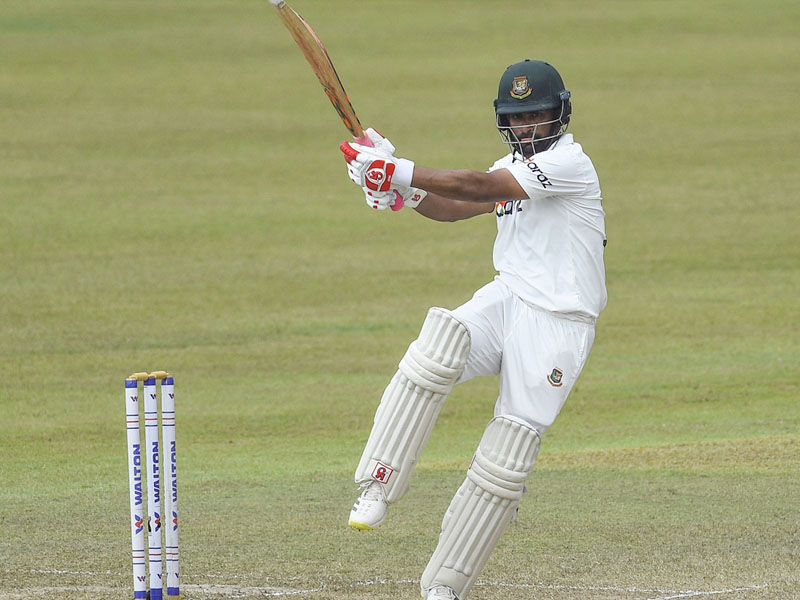
Regarding
leg-spinners, Bangladesh has historically not focused on developing them. This
is in contrast to India, who nurtured Yuzvendra Chahal and Kuldeep Yadav into
match-winners, despite their initial struggles. This demonstrates the
importance of building leg spinners over time.
In Bangladesh, leg spinners often face harsh criticism if they don't perform immediately, making it difficult for them to develop. However, the previous selection committee, led by Minhajul Abedin Nannu and Habibul Bashar, deserves credit for persisting with Rishad Hossain. They ensured he played consistently, regardless of early performance, and this has paid off with his crucial contributions in the World Cup.
Ultimately, we need to invest in the development of leg-spinners, giving them time and support to grow, rather than expecting immediate results.
Dr. Nauman: Tamim, another question for you. Pakistan has faced a persistent challenge since 1952-53, struggling to win in Australia and other away series. Similarly, Bangladesh seems to be in a similar situation, unable to defeat top teams outside their home ground. What do you think is the underlying reason for this trend?
Tamim: You're absolutely right that Bangladesh has struggled overseas, although there have been moments of success, such as our recent victory against South Africa on their home turf. Historically, when foreign teams visited Bangladesh, we prepared spinning wickets to maximize our chances of winning. Conversely, when we toured abroad, we often encountered green wickets tailored to exploit our perceived weakness in fast bowling, which posed challenges for our batsmen.
However, this scenario is evolving. Bangladesh now boasts a stronger fast bowling unit, prompting reconsideration from host nations about pitch preparations. The lack of success overseas has largely been due to our historical deficiency in fast bowling, coupled with the imperative for our batsmen to perform consistently. Playing on better wickets is crucial for our improvement.
Regarding our
approach, there has been a shift in mindset within the Bangladesh Cricket Board
(BCB). They are increasingly prioritizing the preparation of competitive
pitches for international matches. While there's room for improvement in
consistency and approach, I believe BCB is moving in the right direction over
the past two years. It's important for everyone involved, including the cricket
board and team management, to embrace this change to foster greater success for
Bangladesh cricket overseas.
Rashid
Latif: The Bangladesh Cricket Board appears to
be in a stable position, with a strong emphasis on the High-Performance Center
and the National Academy. During my visits to Bangladesh in 2009 and
subsequently, I observed several Sri Lankan and Australian coaches working
there, a fact often overlooked by the media. Nazmul Hasan Shaheb holds a
special place for me; we've met a few times. I'm curious to know whether this
initiative stems from his ideas, those of CEO Chowdhury Shaheb, or the players
actively involved in it.
Tamim: Bangladesh previously lacked quality coaches, necessitating the reliance on foreign expertise. However, this is changing. Bangladeshi coaches are now leading programs like the High Performance (HP) and Tigers teams, having gained valuable experience under foreign mentors. Even in the Bangladesh Premier League (BPL), most head coaches are now local.
While foreign coaches have made significant contributions, I believe that ultimately, a local coach is better suited to lead a team. They possess a deeper understanding of the team's emotions and culture, something a foreign coach may not fully grasp. This shift towards local leadership is a positive development for Bangladesh cricket.
Our current president is undeniably passionate about the sport, thinking about it constantly. While everyone has strengths and weaknesses, his passion for cricket is a definite asset. It demonstrates his commitment to the growth and development of the sport in Bangladesh.
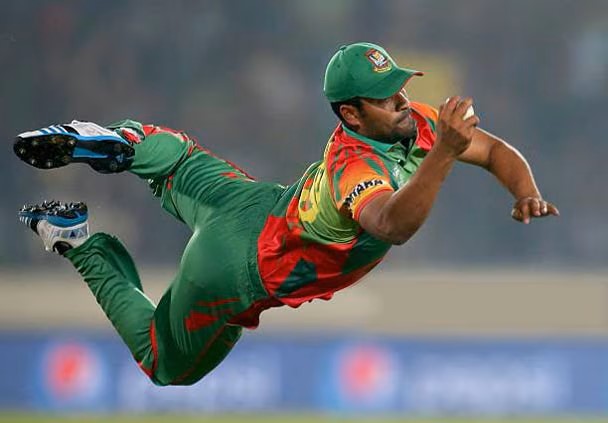
Kamran:
Tamim Bhai, no matter where Bangladesh plays, the most remarkable player we
always see is the twelfth man – the passionate fanbase outside the ropes. Their
energy and enthusiasm are unparalleled. I often wonder, where does this passion
come from? What's the secret behind it?
Tamim: Cricket in Bangladesh is a unifying force, transcending political and social differences. It's the one thing that brings everyone together, a sentiment I'm sure resonates with fans in Pakistan, Sri Lanka, and India.
Our fans are incredibly passionate and emotionally invested in the team, a source of great pride for us players. I recall a Champions Trophy match in 2017 at The Oval in England, where nearly the entire stadium was filled with Bangladeshi supporters. It felt like we were playing at home in Dhaka!
We are truly fortunate to have such dedicated fans, and it is our responsibility as players to reciprocate their support with strong performances and unwavering commitment to the game.
Dr. Nauman: Tamim, building on the topic of fan engagement, we've heard and seen that even during your club tournaments and local cricket matches, you had a large number of fans and spectators attending. Is this culture still thriving, or is it slowly diminishing?
Tamim: See, it is not like before. It's different now. Rashid Bhai and Wasim Bhai along with other players used to visit Bangladesh, drawing crowds of 40,000 to 45,000 for domestic games. One of the main reasons, as I see it, was the scarcity of international matches at that time.
People would come to watch cricket and see their idols in action during domestic games. With the increase in international cricket events, fewer people attend domestic matches these days. However, there's still a following for the game, albeit not like it used to be.

Dr
Nauman: As international players, do you
play club cricket or just first-class cricket?
Tamim: No no, we do play club cricket in Bangladesh. The Dhaka Premier League (DPL) is undoubtedly the best and most competitive tournament in our cricketing landscape. It offers substantial financial incentives for both local and foreign players, making it highly attractive to all cricketers, regardless of their level of experience. Whether you're an international player or a domestic one, the DPL is a prestigious tournament that everyone aspires to participate in.
Rashid Latif: The competition in domestic cricket involved clubs like Mohammedan, Biman, and others whose rivalry was so fierce that crowds could turn violent if anything went amiss during matches. Nowadays, despite events like the BPL and PSL, that fervor from the spectators seems absent. Perhaps it was more evident in club cricket. For instance, we witness such passion in football between fans of Manchester United and Manchester City. Why don't we see that level of rivalry in cricket, especially considering you've played in both the BPL and PSL?
Tamim: While the rivalry between Abahoni and Mohammedan might not be as intense as it once was, it's still very much alive. These two giants of Bangladesh cricket always generate a lot of excitement when they face off. Their matches are broadcast on YouTube and attract a large online audience who eagerly follow the action. The reduced attendance at the stadiums is likely due to the increased exposure to international cricket, both at home and abroad.
However, I can assure you that the Dhaka Premier League (DPL) maintains a high standard of cricket and fierce competition. If you ever have the chance to visit Bangladesh during the DPL season, you will undoubtedly be impressed by the quality of play.
Kamran: Tamim Bhai you mentioned a lot of developmental activities and how Bangladesh cricket is going forward after 2015, the support system that is coming up with local coaches replacing the foreign coaches. How is the adoption of technology, data, and the modern support staff that we talk about, when you started your career at that time these things were not there, so what is happening on that side?
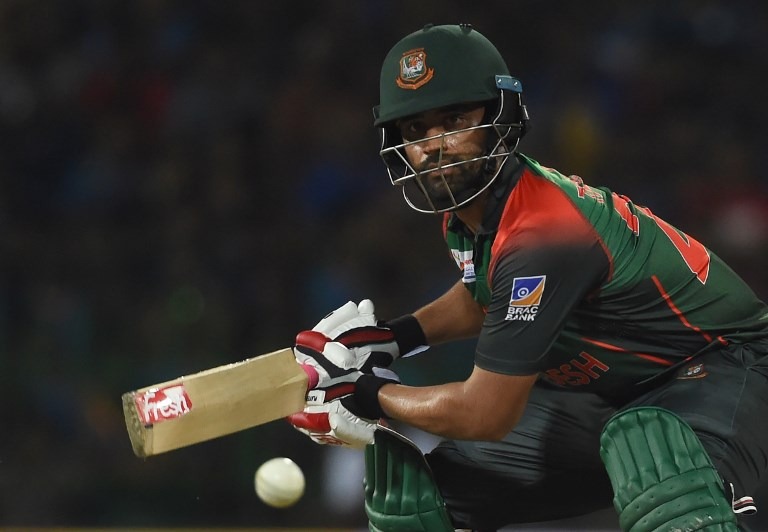
Tamim:
Data analysis and technology have become indispensable in modern cricket. Teams
now rely heavily on computer analysis, videos, and data on opponents' strengths
and weaknesses. This trend is not limited to Bangladesh but is prevalent across
all teams.
Team meetings today are often centered on video analysis, studying opponents' past performances and recent form. This emphasis on data-driven insights is only going to increase in the future.
Back in the mid-2000s, Bangladesh lacked such resources, which may have contributed to Australia's dominance. While Australia had exceptional players, they also had access to advanced analytical tools that other teams didn't.
However, Bangladesh has caught up significantly in this regard. We're now actively using technology to collect and analyze data on players. While we still hire some foreign experts for this purpose, local analysts are learning and developing under their guidance, showcasing our progress in this crucial aspect of the game.
Dr. Nauman: Tamim this use of data, is it only restricted to the international Bangladesh team or is it being decentralized and taken to the lower levels like your U-19 programs, your domestic teams? How do you see that happening now in Bangladesh?
Tamim: The use of data analysis is prevalent in A teams, U-19s, and especially the BPL, where players often face unfamiliar opponents. Personally, when facing a new bowler, I rely on our analysts to provide insights into their bowling style, whether they swing the ball in or out, and other relevant details. However, one area where Bangladesh can improve is introducing analysts and data facilities into first-class cricket and the Dhaka Premier League. This is a gap we need to address, but I'm confident that the BCB is working on it, as they already have several full-time analysts employed within the organization. While we're currently lagging behind in this aspect, I'm optimistic that the BCB will bridge this gap in the near future.
Rashid Latif: Before BPL and after BPL, what difference do you see in Bangladesh cricket as more people are playing the game and the financial side has also become stronger?
Tamim: Certainly, Rashid Bhai, financially, players have undoubtedly benefited from tournaments like the BPL. Additionally, playing alongside international cricketers, such as facing someone like Rashid Khan in the BPL, can provide invaluable experience for domestic players aspiring to make it to the Bangladesh national team. It allows them to familiarize themselves with international bowlers beforehand, which can ease their transition into international cricket compared to facing them for the first time at that level.
So, the BPL has certainly contributed to Bangladesh cricket in this regard. However, I believe there is potential to extract even greater benefits from the tournament. In my opinion, the BPL is a fantastic tournament with a significant draw for foreign players—it's one of the highest-paid franchise tournaments globally. With proper management and strategies, we could leverage the BPL further to enhance our cricketing standards and achievements.
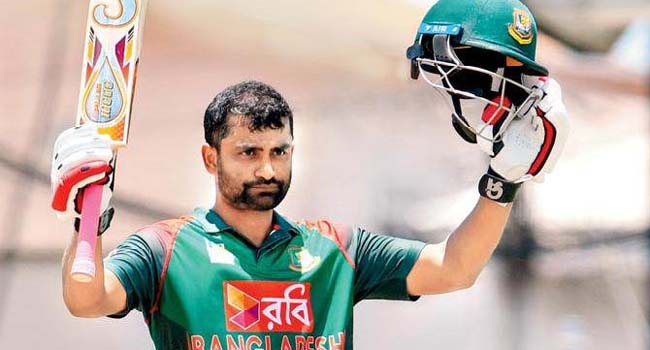
Kamran:
Tamim Bhai you played all around the world, and in different leagues as well. You
have played in BPL and PSL too, especially when it was held in UAE. So how was
your experience playing in PSL and if you have to summarize it, in comparison
to the other leagues where you have played?
Tamim: Playing in the PSL was a fantastic experience, and I thoroughly enjoyed my time with Peshawar. The quality of cricket in the PSL is exceptionally high, although I was unfortunate to play most of my matches in Dubai when the pitches weren't as favorable as they are now in Pakistan.
The PSL is undeniably one of the top franchise cricket leagues globally, particularly known for its exceptional bowling talent. Despite some high-scoring matches due to the pitches, every team boasts at least two bowlers capable of consistently exceeding 140 km/h (87 mph), a rarity in franchise cricket.
While the IPL remains in a league of its own, and it wouldn't be fair to compare any other league to it, the PSL stands tall alongside other top-tier leagues like the BPL. It's a testament to the league's quality and the exciting brand of cricket it offers
Dr. Nauman: Tamim, we've been discussing leagues like the BPL, and Rashid asked about their influence on young players. In Pakistan, we're noticing a shift where many youngsters are increasingly drawn to white-ball cricket, especially T20 formats for franchises, sometimes at the expense of their commitment to first-class cricket. How does this trend compare in Bangladesh? Are young cricketers still enthusiastic about playing first-class cricket and participating in longer-format matches?
Tamim: For reasons I can't fully explain, ODI cricket has historically been Bangladesh's most beloved format. Perhaps it's due to our relative success in this format. However, younger generations are growing up in a T20-dominated era, where matches are shorter, more action-packed, and filled with boundaries. It's natural for them to gravitate towards this exciting format.
Personally, like you, I believe Test cricket is the pinnacle of the sport. There's no feeling quite like scoring a century in a Test match. It's the ultimate test of skill and endurance. So, while I cherish Test cricket the most, it's understandable that young cricket enthusiasts today, who are primarily exposed to T20s, prefer the shorter formats.
Our generation grew up watching more Test matches than ODIs or T20s, which shaped our appreciation for the longer format. It's a different landscape for young players today, and their preferences reflect this shift.

Rashid
Latif: Tamim you have played cricket around the
world, England, Australia, India, West Indies, and other places. Where did you
face the toughest challenge and where did you enjoy batting the most, except
Bangladesh of course?
Tamim: Bangladesh is not the easiest place for batsmen, I can assure you of that. It can be quite challenging. In my experience, South Africa posed a significant challenge, but I thoroughly enjoyed playing cricket in England, particularly in white-ball formats. The wickets there are excellent, and the grounds are fantastic. Although I had limited opportunities to play in India, I must say that, apart from Bangladesh, England stands out as where I enjoyed my cricket the most.
Dr. Nauman: Tamim, you've mentioned your enjoyment of playing in England. Could you share your experience of walking down the long room at Lords during the Test match in 2010, and what it felt like to score a hundred there?
Tamim: That series and that particular innings still hold a special place in my heart. Reflecting on it, I realize the importance of not overthinking things. When I faced bowlers like James Anderson or Graeme Swann back then, I was young and didn't obsess over their strengths and weaknesses. I simply went out there, enjoyed batting, and succeeded.
Knowing too much about a bowler can sometimes be detrimental. It can create unnecessary pressure and complicate your approach at the crease. I wish I could have maintained that carefree mindset in later years, but experience and information inevitably change how you perceive the game.
Kamran: We're all familiar with Bangladesh's historic victories over Australia in 2005 and their success in the Champions Trophy. More recently, there was a notable Test match victory over New Zealand in New Zealand. How significant was that win for Bangladesh cricket, and what impact did it have on the team?
Tamim: I believe the victory over New Zealand in 2023, where Ebadot Hossain took six wickets and the entire pace attack performed exceptionally, was a turning point in the perception of Bangladesh's fast bowling. It marked a shift in focus for the BCB, leading to increased investment in developing fast bowlers.
Prior to this, Bangladesh's successes were largely attributed to batsmen and left-arm spinners, with fast bowling playing a lesser role. However, that win proved we could triumph through our pace attack, changing the narrative entirely.
Mashrafe Mortaza's past success and Taskin Ahmed's dedication to training and improvement have set a strong example for young bowlers. I hope that aspiring pacers will look up to these role models, leading to further development and establishing Bangladesh as a formidable fast-bowling unit in the future.
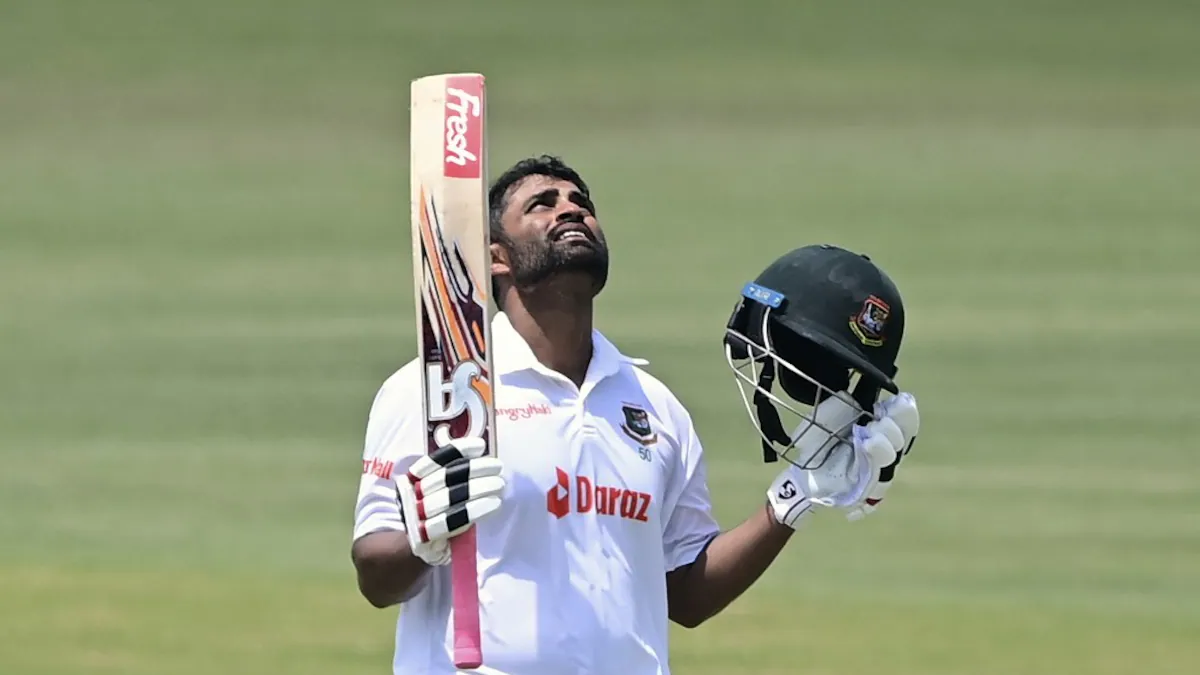
Dr.
Nauman: Tamim one last question. We have
heard that cricketers are really big in Bangladesh, they are the superstars,
and with the crazy fan following…
Tamim: Bangladeshi fans are incredibly passionate about cricket, and beyond love, they have immense respect for the players. While criticism is inevitable when the team doesn't perform well, the overwhelming sentiment towards cricketers is one of respect and admiration. This is something I am deeply proud of.
Dr. Nauman: Should we hope to see you in international cricket?
Tamim: Maybe…maybe. I hope so.
Rashid Latif: My final question pertains to Pakistan cricket and their early exit from the World Cup. Instances like these have been witnessed before, including with your team and Pakistan, such as both teams' early exits in the 2007 World Cup group stages. What is your perspective, and what is the perception in Bangladesh regarding Pakistan's loss to America and the criticism the players are facing for their premature elimination?
Tamim: My recent tweet about Pakistan cricket received a lot of criticism, but I think people misunderstood my intention. While Bangladesh and Pakistan have a complex political history, we share a rich cricketing history that often gets overlooked. I've played alongside Shahid Afridi and have immense respect for him.
I don't claim to know the specifics of how he's perceived in Pakistan, but our conversations always revolve around cricket, with genuine concern for both our teams. Pakistan receives strong support from Bangladesh and India, and I consider many of the Pakistani players in the World Cup as brothers. When they struggle, I feel their pain. That's the reason behind my tweet, which was unfortunately misinterpreted.
Everyone is disappointed by Pakistan's early exit from the World Cup, as we expected them to reach at least the Super Eights. However, even successful teams like New Zealand experience setbacks. Fans need to remember that criticism is fine, but it shouldn't cross a line. Emotions can sometimes lead to hurtful comments, and I believe this happens everywhere, not just in Pakistan or Bangladesh.
I urge everyone to consider the feelings of the players and their families when commenting on social media. Nobody intentionally fails on the field; it's simply the nature of the game. I'm confident Pakistan will bounce back from this and return stronger.
____

